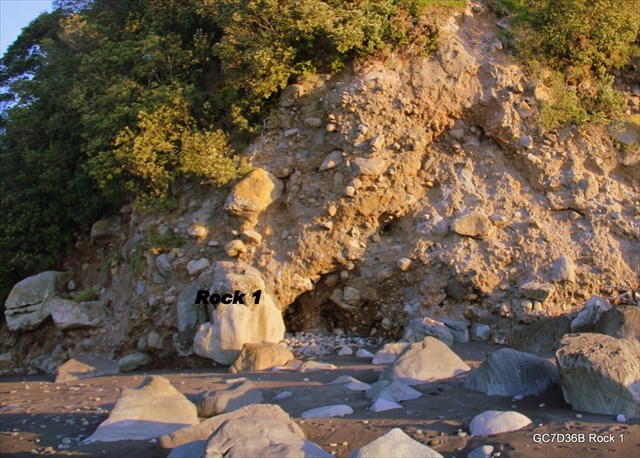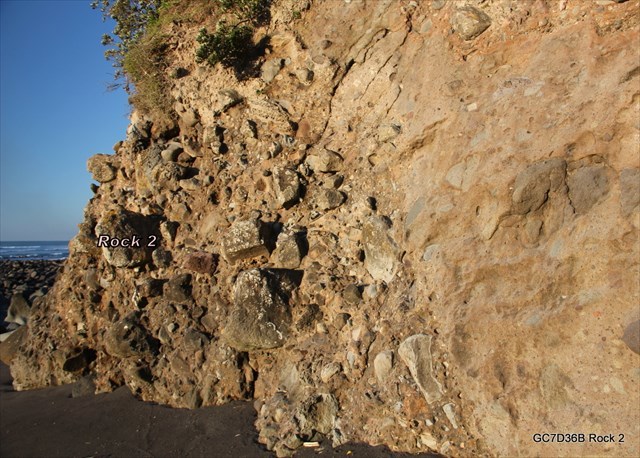Tafoni (singular: tafone) are concave holes found in granular rock such as sandstone, granite, and sandy-limestone forming a 'honeycomb' type pattern. Hence tafoni is also called fretting, stonelace, stone lattice, honeycomb weathering, and alveolar (cavity) weathering.
Tafoni can be found in all climate types, but are most abundant in the splash tidal zone in coastal areas as well as semi-arid and arid deserts. Honeycomb weathering also affects buildings constructed of susceptible rock such as limestone.

Wikipedia For honeycomb weathering to occur, some research indicates that a source of salt is needed because the basic mechanism for this kind of weathering is salt heaving. Salt is deposited on the surface of the rock by saltwater spray or by wind. Moisture must be present to allow for the salt to settle on the rocks so that as the salt solution evaporates the salt begins to crystallize within the pore-spaces of the rock. Permeable rock is also needed so that there are pore-spaces for the salt to crystallize within. These salt crystals pry apart the mineral grains, leaving them vulnerable to other forms of weathering. It takes prolonged periods for this weathering to become visible, as the rock goes through cycles of wetting and drying. However, in some arid and hyper-arid environments (i.e. Southern Jordan), it has been found that the differential weathering that produces tafoni initiation and development may also be linked to freeze-thaw and wetting-drying cycles.
Inter-tidal honeycomb weathering is found on rock within the tidal zone. This type of honeycomb weathering is limited in its growth by the rate of evaporation from the sun. Once the depressions have grown large enough that the sun can not evaporate all of the water left in the gap by the retreating wave, the holes are as large as they will get, because the salt can not dry out and wedge grains apart any longer.
The western point of Greenwood Road beach is the location of the historical Tataraimaka Pa built atop a volcanic debris avalanche or lahar that flowed from Pouakai volcano.
Both stages can be reached at any tide, although it is safer to visit this location mid to low tide.
300 odd metres walk to the West of the parking area across the sand beach is Stage 1

At this location, investigate the large rock indicated above, and answer these questions...
1. Describe the tafoni you see adjacent to the cleft in the rock, i.e. size, depth, thickness of walls between the honeycombs.
2. What side of the rock is the tafoni predominately? What does this indicate?
3. What type of rock do you think this rock is?
40 metres to the West around the point is Stage 2

At this location, the tafoni of the indicated rock is different to that previously observed...
4. Describe this difference in the tafoni. What do you think has happened here to cause this?
5. Optional. Provide a photo of one of the neighbouring tafoni rocks, but please avoid photographing the two rocks specified in this Earthcache.
To log this Earthcache, please message the CO with your answers.
Please do not answer them in your log. You may log your find immediately.